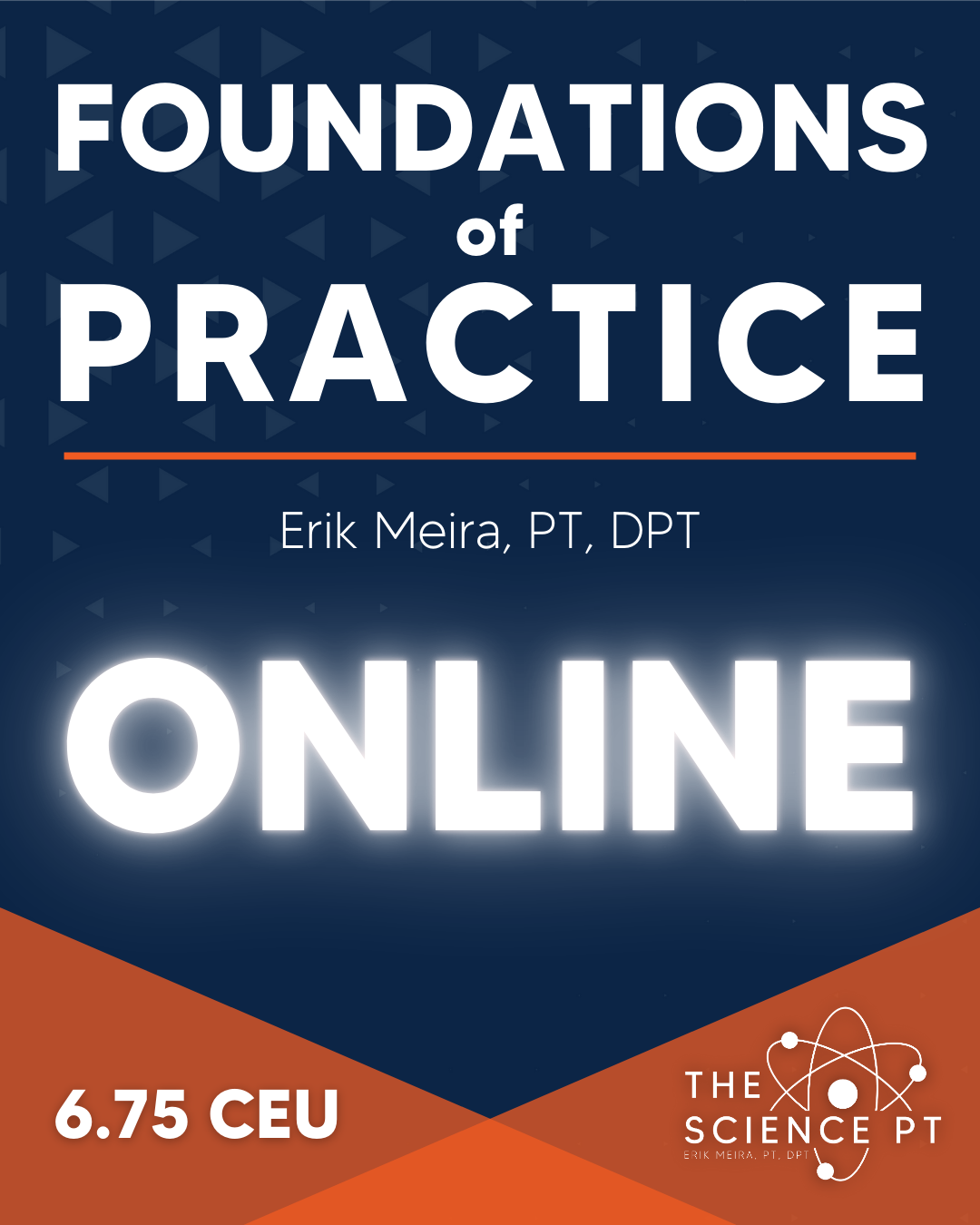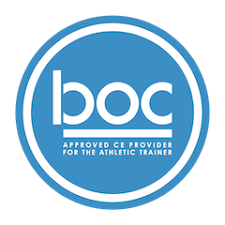Foundations of Practice

See what people are saying about Science PT courses!
Professors and lecturers at physical therapy schools are eligible for free access to some of the content of this series for use in their classes. Contact me for details!
Watch a free 20-minute sample on YouTube here.
Intended Audience
Physical Therapists, Physical Therapist Assistants, Athletic Trainers, and related professions/students of those fields
Description
There are many narratives in rehabilitation medicine about why different interventions work. Many of these explanations are not well explored in the literature and are a source of confusion for providers and patients alike. These beliefs often make practice difficult and ultimately can make our patients worse. Having a deeper understanding of the complexities and nuance around science, psychology, education, and human movement can make our approach to patient care simpler and more effective.
This series of lectures explores an overview of science and how it interacts with rehabilitation practice, interacting with our patients and the societies that they inhabit, and finally, biomechanics and interventions around movement and function. The content is presented in short lectures that cover both theory and application and can be viewed at the individual participant’s pace. The goal of the course is to provide an effective foundation for practice, whether the learner is a new graduate or an experienced clinician looking for a new way to think about how we approach our patients and the world that surrounds them. – Recorded in 2021
Objectives
Upon completion of this course, participants will be able to:
- Summarize some of the problems found in the published literature
- Review a scientific article for practice application
- Successfully apply the ideals of Evidence-Based Practice
- Understand the social model of disease and disability
- Effectively engage and educate patients
- Describe envelope of function
- Differentiate between peak force, rate of force development, and impulse
- Explain basic tools for changing movement behavior
- Provide alternative explanations for the effects of common interventions
Outline
- Introduction
- Science and Practice
- Problems in the Published Literature
- What is “Science”?
- Appreciating Uncertainty/Thinking in Probabilities
- Fixing Publication Problems
- Applying Science to Practice
- How to Review an Article
- Drawing Clinically Relevant Conclusions from Research
- Our Patients and the Societies They Inhabit
- Social Model of Disease/Disability
- Putting the Patient at the Center
- The 5 ‘E’s and Placebo Theater
- The Socratic Therapist
- Biomechanics/Movement/Interventions
- Understanding Human Movement as a Dynamical System
- Envelope of Function/Load Tolerance
- Understanding the Mechanics of Biomechanics
- Applying Biomechanics to Practice
- Using Dynamometers
- Training Movement
- Alternative Explanations
- Final Thoughts
Presenter
This course is presented by Erik Meira, PT, DPT who is currently the director of the Physical Therapy Science Communication Group based out of Portland, OR, USA, a company that specializes in sports rehabilitation and education, and is a clinical advisor to the University of Portland NCAA Division I program. He is an ABPTS Board Certified Sports Clinical Specialist and an NSCA Certified Strength and Conditioning Specialist with extensive experience in the management of sports injuries at many different levels. He is a frequent consultant for organizations within the NCAA, NBA, NFL, MLS, WNSL, and other elite sports leagues.
Dr. Meira has authored several articles and textbook chapters and lectures internationally in small private team settings all the way through being the keynote speaker at large professional conferences. Known for his ability to make complex ideas simple to understand with a humorous delivery style, he covers topics such as the hip, knee, exercise prescription, returning athletes to sport, science application, applied biomechanics, and PT practice models. Previously he was the founder and the original chair of the Hip Special Interest Group of the American Academy of Sports Physical Therapy (AASPT), served as their APTA Combined Sections Meeting (CSM) Program Chair, and was a member of the AASPT Executive Committee. He is also the co-host of PT Inquest, a podcast dedicated to understanding physical therapy science and provides continuing education through The Science PT.
Contact Hours: 6.75
The Science PT (BOC AP#: P3211) is approved by the Board of Certification, Inc. to provide continuing education to Athletic Trainers. This program is eligible for a maximum of 6.75 Category A hours/CEUs. ATs should claim only those hours actually spent in the educational program.
Foundations of Practice is approved by AC Training and Seminars, California Approval Provider for Physical Therapists. Approval #106 for 0.675 CEU (6.75 Hours)
This course meets the standards for 6.75 hours of continuing education by most other state physical therapy boards. For more information on CEU, check out our Continuing Education Credit page.
Access:
Once registered, you will have 6 months to complete the course. You will have unlimited access during that time.
Terms & Conditions/Refund Policy
By registering for this course you agree to the Terms & Conditions including the refund policy.

